Quick Summary

Click here for Price and Turnaround Time
Phenotype: The Scottish Fold breed produces cats with both straight and folded ear phenotypes. A single copy of the fold mutation produces the breed's characteristic folded ears, and these cats may also have cartilage- and bone-related health problems including misshapen toes, thickened and inflexible tails, and accelerated progressive osteoarthritis. Age of onset and progression of such secondary effects are highly variable. Cats with two copies of the fold mutation are prone to more extreme health problems affecting cartilage and bone.
Mode of Inheritance: Autosomal dominant
Alleles: N = Normal (straight ears), SF = Fold mutation
Breeds appropriate for testing: Foldex, Highland Fold, Highland Straight, Scottish Fold, Scottish Straight
Explanation of Results:
- Cats with N/N genotype will have straight ears. They cannot transmit this fold variant to their offspring.
- Cats with N/SF genotype will have folded ears and may develop health issues related to cartilage and bone. They will transmit this fold variant to 50% of their offspring, and those offspring will also have folded ears.
- Cats with SF/SF genotype will have folded ears and may have severe bone, cartilage, and joint issues. They will transmit this fold variant to all of their offspring, and those offspring will also have folded ears.
$44 one test per animal
$66 this test + PKD1 test
Cat DNA tests are carried out using cells brushed from your cat's cheeks and gums using household cotton swabs.
The cat DNA submission form with instructions and a place to tape the cotton swabs is sent to you via email after you place an order, and can be printed from your home computer. DNA test kits are no longer mailed.
Instructions
Step-By-Step:
1.
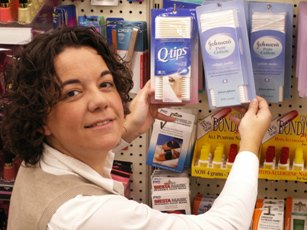 Purchase regular household cotton swabs for cat DNA collection (the cotton swabs can be purchased at a pharmacy or drug store)
Purchase regular household cotton swabs for cat DNA collection (the cotton swabs can be purchased at a pharmacy or drug store)
2.
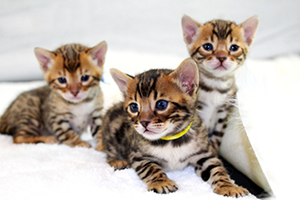
Make sure the cat has not had anything to eat or drink for at least 1 hour prior to collecting sample.
When swabbing kittens, isolate each kitten from the mother, littermates and any shared toys for 1 hour prior to swabbing. Kittens should not have nursed or eaten for 1 hour prior to collecting sample.
If collecting samples from more than one cat, make sure to sample one cat at a time and wash your hands before swabbing another cat.
3.
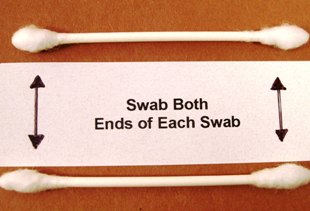 Use both ends of the two cotton swabs for a total of four swabs.
Use both ends of the two cotton swabs for a total of four swabs.
4.
Place the cotton head of the swab between the cat’s gums and cheek and rub or rotate the swab back and forth for 15 seconds. Repeat with each cotton swab head, for a total of 4 swabs. We recommend swabbing a different area of the gums with each swab head.
5.
Wave the swab in the air for 10-15 seconds to air dry it before attaching it to the submission form.
6.
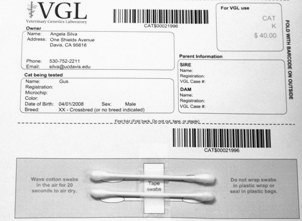 After swabbing the cheek and gums, tape the cotton swabs to the bar-coded submission form printed from your MyVGL account.
After swabbing the cheek and gums, tape the cotton swabs to the bar-coded submission form printed from your MyVGL account.
ATTENTION:
- Do not collect saliva/drool – the key to obtaining a good sample is getting cheek cells on the swab.
- Do not rub swab on the cat’s tongue or teeth – this will result in poor quality sample.
- Do not collect a sample from a kitten that has recently nursed – the mother’s genetic material can rub off on the kitten’s mouth and contaminate the sample.
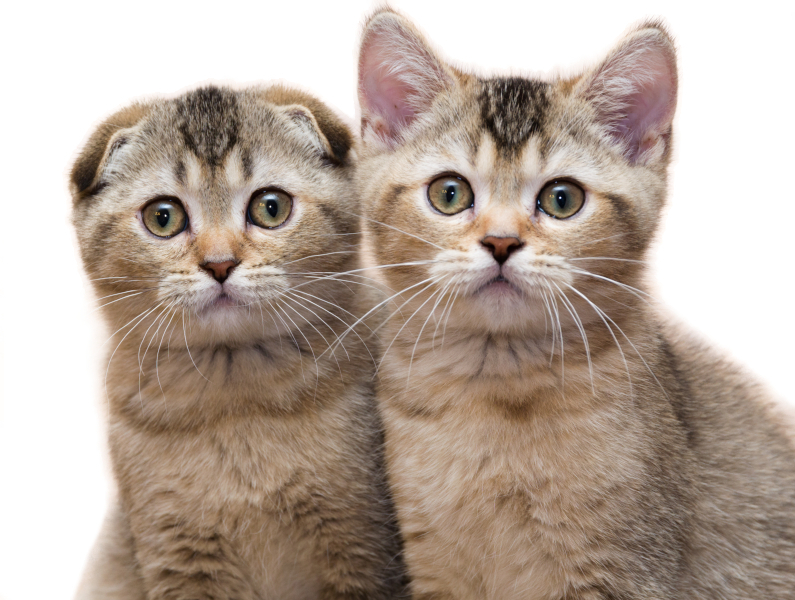
The Scottish Fold breed produces cats with both straight and folded ear phenotypes. The fold type results from a mutation in a single gene. The mutation is dominant and a single copy of the mutation affects cartilage development resulting in the Scottish fold osteochondrodysplasia (SFOCD) phenotype, which includes malformation of the distal forelimbs and hindlimbs, malformation of the tail and fold ears.
All fold kittens are born with straight ears. Ear folding starts as early as 3 weeks of age. Other impacts of the mutation are variable but most consistently present as smaller feet resulting from misshapen toes, thickened and inflexible tails, and accelerated progressive osteoarthritis. Age of onset and progression of secondary effects are highly variable but ear folding is a consistent feature. Kittens with two copies are prone to more extreme health problems affecting cartilage and bone.
Research by Dr. B. Gandolfi in the laboratory of Dr. Leslie Lyons, University of Missouri, identified the mutation associated with the fold phenotype.
Testing for Scottish Fold assists owners and breeders to confirm presence and number of copies of the Fold mutation in young kittens. Knowledge of the genotype status will inform potential risk for future health problems.
